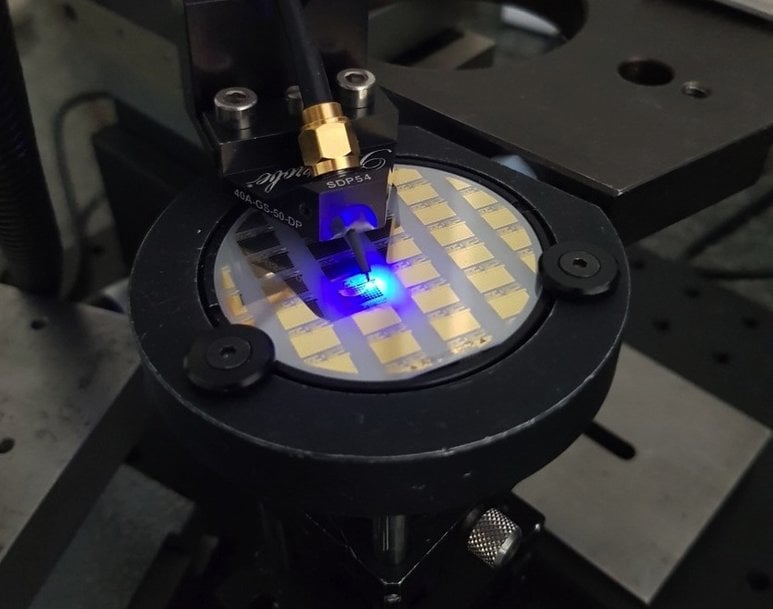CEA-Leti Researchers Breakthrough put Record for LiFi Communications Using Single GaN Blue Micro-Light-Emitting Diode
Data-Transmission Rate of 7.7 Gbps Positions LiFi as Possible Replacement for WiFi with Further R&D and Industrial Standardization to Ensure Interoperability of Systemscapability of 5G.

CEA-Leti today announced its researchers have broken the throughput world record of 5.1 Gbps in visible light communications (VLC) using a single GaN blue micro- light-emitting diode (LED). Their data transmission rate of 7.7 Gbps achieved with a 10 µm microLED marks another step toward commercialization and widespread use of LiFi communication.
- VLC, commonly called LiFi (short for "light fidelity"), is an emerging wireless communication system that offers an alternative or a complementary technology to radio frequency (RF) systems such as WiFi and 5G. It is considered to be a promising technology for security-related applications because light propagation can be confined to a room with no information leakage, as opposed to WiFi communication, which penetrates walls. LiFi also holds promise for ultra-highspeed data transmission in environments where RF emissions are controlled, like hospitals, schools, and airplanes.
- Single microLED communications offer an ultra-high data-transmission rate for a variety of opportunities for new applications. These include industrial wireless high-speed links in demanding environments such as assembly lines and data centers, and contact-less connectors, or chip-to-chip communication. But their weak optical power limits their applications to short-range communications. In contrast, matrices of thousands of microLEDs contain higher optical powers than open mid- and long-range applications. However, preserving the bandwidth of each microLED within a matrix requires that each signal has to be brought as close as possible to the micro-optical source.
'' Exciting Potential for Mass-Market Applications.
This technology has exciting potential for mass-market applications," said Benoit Miscopein, CEA-Leti research scientist. "Multi-LED systems could replace WiFi, but wide-scale adoption will require a standardization process to ensure the systems' interoperability between different manufacturers.
- In addition to a stand-alone WiFi-like standard, the possibility to include this new technology as a component carrier in the downlink of 5G-NR, a radio-access technology for 5G mobile considerations, is also under investigation to bring a large additional license-free bandwidth.
'' This may be feasible because CEA-Leti's LiFi physical layer relies on the same concepts as WiFi and 5G technologies," said Miscopein. "Matrices of thousands of microLEDs could also open the way to mid- to long-range applications, such as indoor wireless multiple access.
Preserving the bandwidth of each microLED within a matrix requires that each signal is generated as close as possible to the micro-optical source.
" To meet this challenge, we expect to hybridize the microLED matrix onto another matrix of CMOS drivers: one simple CMOS driver will pilot one microLED," Miscopein said. "This will also enable the additional feature of piloting each microLED pixel independently, and that allows new types of digital-to-optical waveforms that could eliminate the need for digital-to-analog converters commonly used in the conventional 'analogue' implementations of LiFi.
While the Light Communications Alliance will promote interoperability between different manufacturers' LiFi systems, CEA-Leti will continue its research in two areas:
- A better understanding of the electrical behavior of single LEDs in high frequency regimes and the link between bandwidth and electromigration patterns, and
- Techniques to improve the range and/or increase the data rate using multi-LED emissive devices. This requires adapting the waveform generation as well as a CMOS interposer to drive the matrix on a pixel basis.

